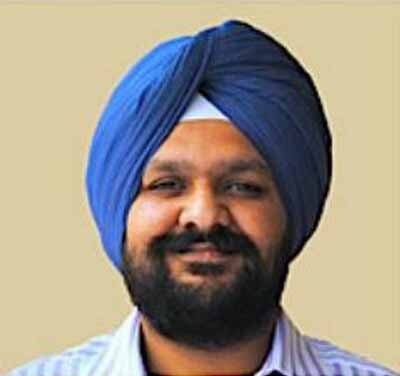The role of civil society in building bridges between India and Pakistan has been pivotal, even when ties between New Delhi and Islamabad have been strained.
If one were to look at recent years some of the important linkages between India and Pakistan have a strong imprint of civil society — the Kartarpur Religious Corridor which became a reality in 2019 is one such example. The visa free passage which connects Dera Baba Nanak (Panjab, India) with Darbar Sahib, Kartarpur (Narowal, Punjab, Pakistan) – the final resting place of the founder of the Sikh faith Guru Nanak Sahib — went ahead in spite of relations between India and Pakistan being at their lowest ebb in 2019.
While the role of geopolitics, as well as individual political leaders in the foundation of the corridor has been discussed extensively, the efforts of civil society organisations from Panjab (India) cannot be forgotten. In fact, when there was little awareness with regard to the Kartarpur Corridor, it was the ‘Kartarpur Raavi Darshan Abhilashi Sanstha’ founded in 2001 which generated awareness, in Panjab, regarding the religious corridor.
The organization was founded by Late Sardar Kuldip Singh Wadala a prominent political leader of Panjab (India), who every month performed an ‘ardas’ (prayer) for the corridor, along with a large group of devotees, and tirelessly lobbied with governments on both sides (Wadala passed away in 2018, a few months before the foundation stone of the Kartarpur Religious corridor was laid). Through the efforts of the sanstha, the movement for the corridor gained strength and a bi-partisan political consensus was built over a period of time in Panjab (India), with members from all prominent political parties of the state supporting the demand.
Gurinder Singh Bajwa, who also happens to be a political activist, is currently General Secretary of the Kartarpur Ravi Darshan Abhilashi Sanstha and a close associate of Late Wadala. While speaking to the writer of this article, he said that the organisation led by Wadala and his group raised the demand for a corridor and created awareness, nationally and internationally, with regard to the Kartarpur corridor, when no one thought it was possible. While he said that the religious corridor has become a reality, as a result of the prayers of the Nanak naam lewa Sangat (devotees of Guru Nanak Sahib) globally, it is important to address logistical issues, so that more pilgrims can cross over daily (the current number of pilgrims crossing over is between 150 and 250 which is way below the targeted number of 5000 devotees). Bajwa also said that it is important to resume trade between both countries via the Wagah-Attari land crossing so that the economy of Panjab (India) border belt can benefit, and he also spoke in favour of easing out visa procedures for individuals, from both countries, especially over the age of 75 who want to visit their erstwhile homes.
Ever since it re-opened in November 2021, the Kartarpur Religious Corridor has been witness to many re-unions as a result of the efforts of the YouTube channel ‘Punjabi Lehar’ which has been interviewing survivors of partition from both sides of the divide. As a result of the efforts of Punjabi Lehar, not only have separated families been able to meet, but due to extensive coverage on social media, visas have been issued to members from some of the separated families.
Recently, the visit of Reena Chhiber Verma aged 90 to Rawalpindi (Punjab, Pakistan) her ancestral home, and other cities in Pakistan has been in the news and has yet again reiterated the importance of civil society, and the role of increased communication linkages via social media. Verma had established contact with many individuals, including media persons, via social media and had expressed a desire to visit her home once before she died. While she did receive invitations from persons and organisations she had established contact with, her visa application for visiting Pakistan was rejected.
Finally, she made a video regarding her desire to visit her ancestral home, which was seen by Pakistan’s Minister of State for Foreign Affairs, Hina Rabbani Khar who then told the Pakistan High Commission in Delhi to issue a visa . It would be pertinent to point out, that the India-Pakistan Heritage Club first identified Verma’s house and also helped her in gaining permission to travel to Pakistan.
Verman received a warm welcome at her ancestral home, and during her visit she made the point that many people like her wanted to visit their homes. The 90 year old also said that “My heart is grieving but I’m thankful to be around to experience a moment I’ve been waiting for a lifetime.”
While it is easy to be dismissive of people to people linkages and the role of civil society in improving relations between India and Pakistan, the last few years have shown the importance of people to people links, in India-Pakistan ties, and also underscored the potential role of civil society which has been able to make effective use of social media for facilitating the re-union of members of separated families and recently, the visit of Reena Chibber Verma to Pakistan. It is important for governments on both sides to examine the possibility of easing out visa procedures for certain categories of individuals; especially religious pilgrims and individuals over the age of 75 years so that they can get an opportunity to visit their erstwhile homes or re-unite with their relatives.
[Photo by Shahzaib Damn Cruze, via Wikimedia Commons]
The views and opinions expressed in this article are those of the author.

Tridivesh Singh Maini is a New Delhi based analyst interested in Punjab-Punjab linkages as well as Partition Studies. Maini co-authored ‘Humanity Amidst Insanity: Hope During and After the Indo-Pak Partition’ (New Delhi: UBSPD, 2008) with Tahir Malik and Ali Farooq Malik. He can be reached at [email protected].

